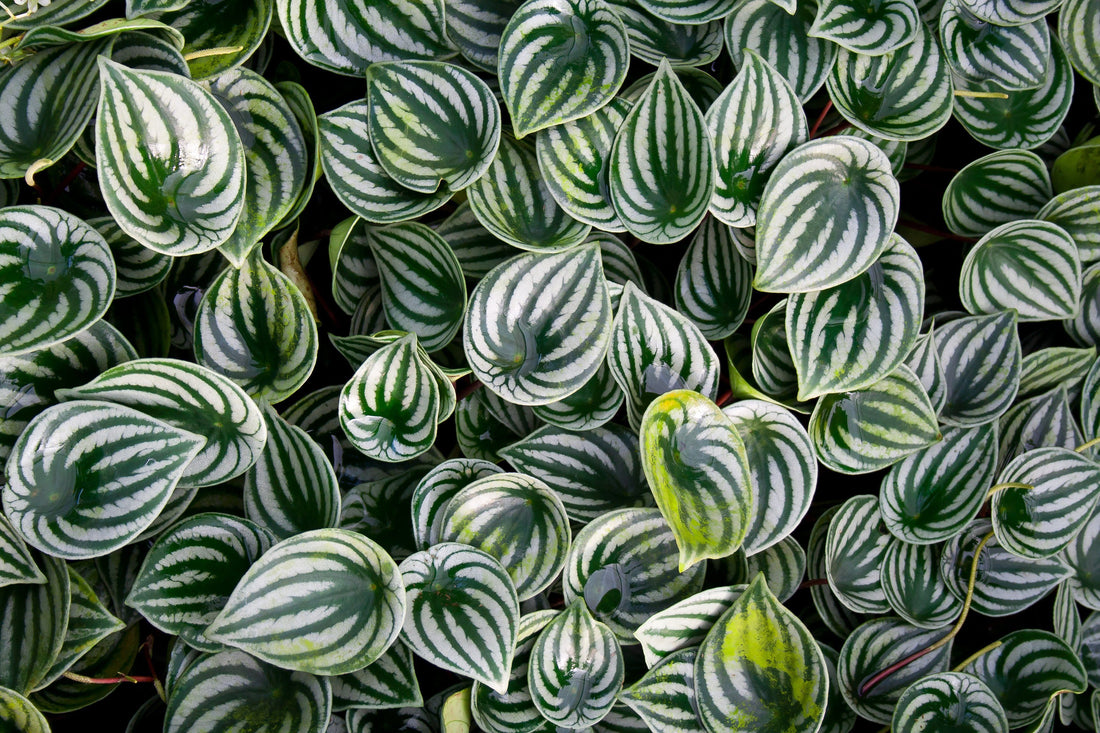With over 1,500 diverse varieties, peperomias have remained a household staple for many years. The name translates to "similar to pepper", as this plant is in the same family as our beloved spicy fruits.
Collecting peperomias won't add any spice to your kitchen, but it will certainly add color and life to your space. Hailing from the tropics, this species loves warmth, moisture, and dappled light. It's extremely adaptable, which would explain why it's so popular in homes around the world.

GENERAL CARE
LIGHT
Place in low to bright indirect light. Avoid direct light, as this can scorch the leaves.
WATER
Water once every 1-2 weeks or when the top 2-3" of soil feel dry to the touch. Peperomias are slightly drought tolerant, especially those with succulent-like leaves, so they can usually go a bit drier than you may think!
FEEDING
Use diluted plant food once a month in the spring and summer. Avoid plant food in the fall and winter when the plant goes dormant. If you've recently repotted, wait ~6 weeks before feeding.
TOXICITY
These plants are non-toxic and totally safe for your furry friends.
Care instructions are usually consistent for all peperomias, but we always recommend researching your specific plant variety to make sure you get it right the first time.

The most common issue for peperomias is stem rot caused by fungus or bacteria. To avoid this, be sure to plant in a well-draining soil in a pot with a drainage hole. These plants are from the tropics, but will do best when you err on the drier side. You can apply routine neem treatments to stems, or mix charcoal into your soil to keep fungal infections at bay.
Peperomias are not only easy to upkeep, their easy to propagate, too. To multiply your plants, take a healthy stem, or even a leaf cutting with a clean, sharp tool. Once you have your pieces, you can place them in a shallow glass of water to cover the cut ends, or plant them into fresh, nutrient-rich soil. Within a few weeks, you should have some new plants ready to gift or place in your space.

